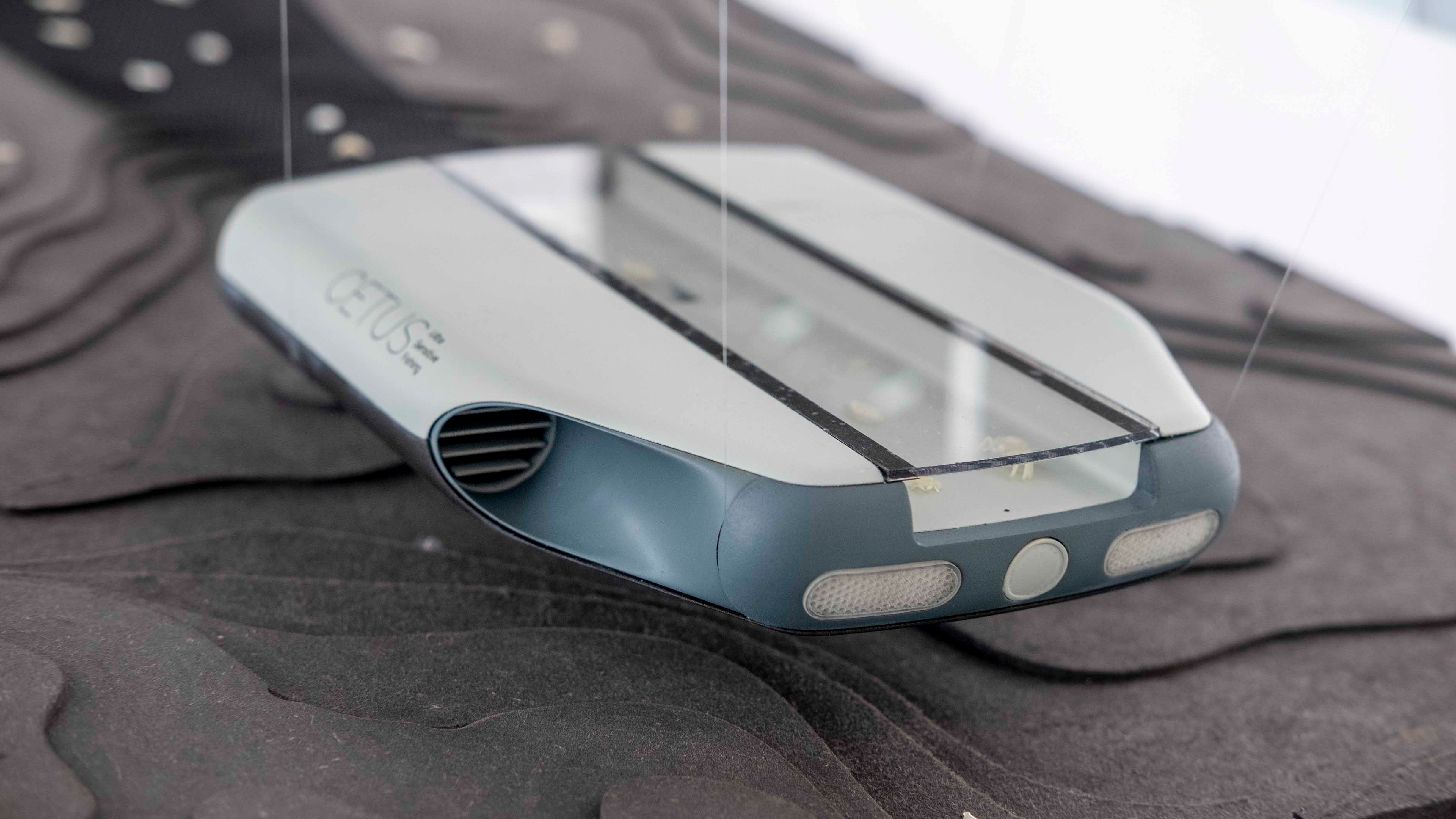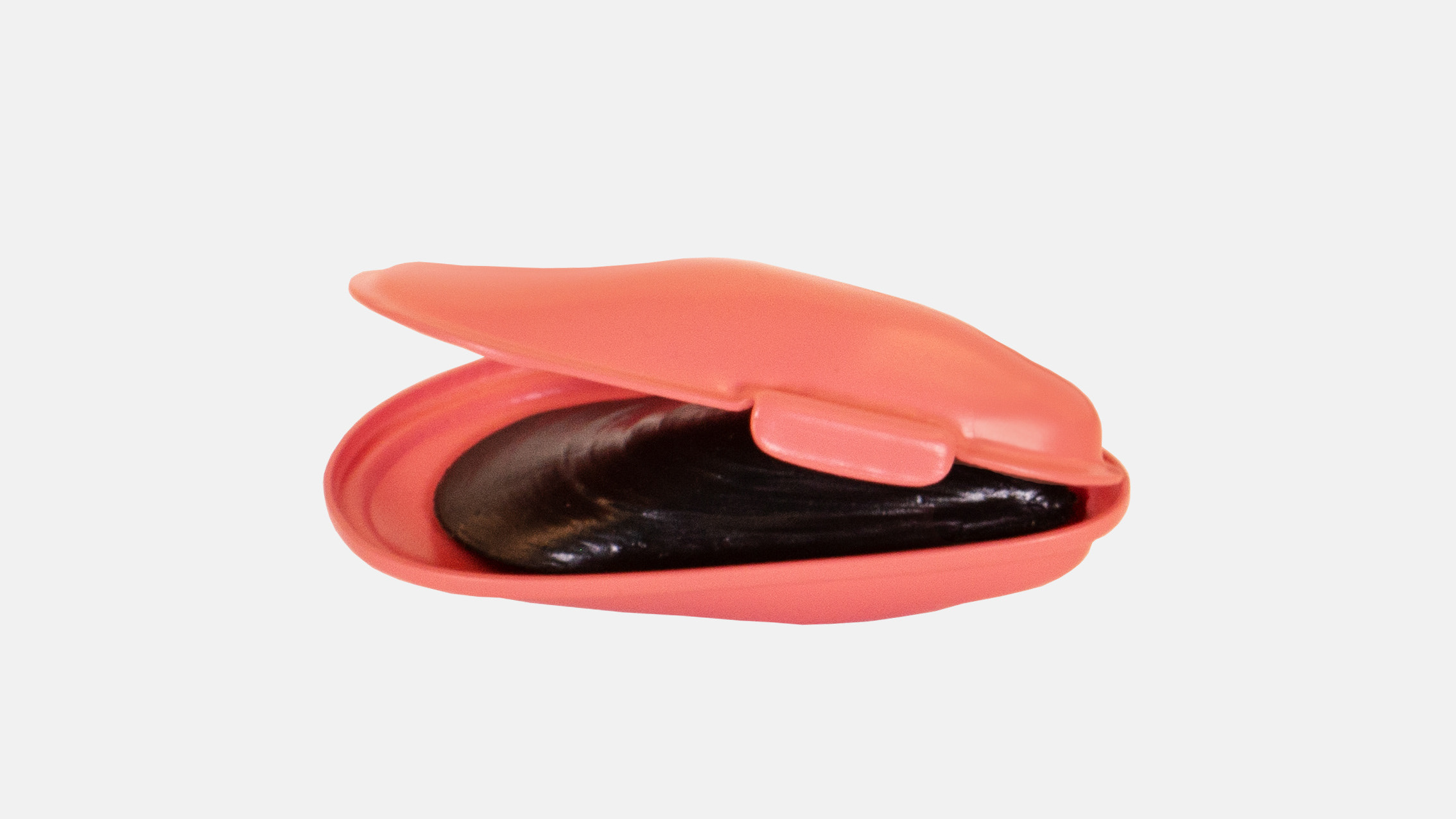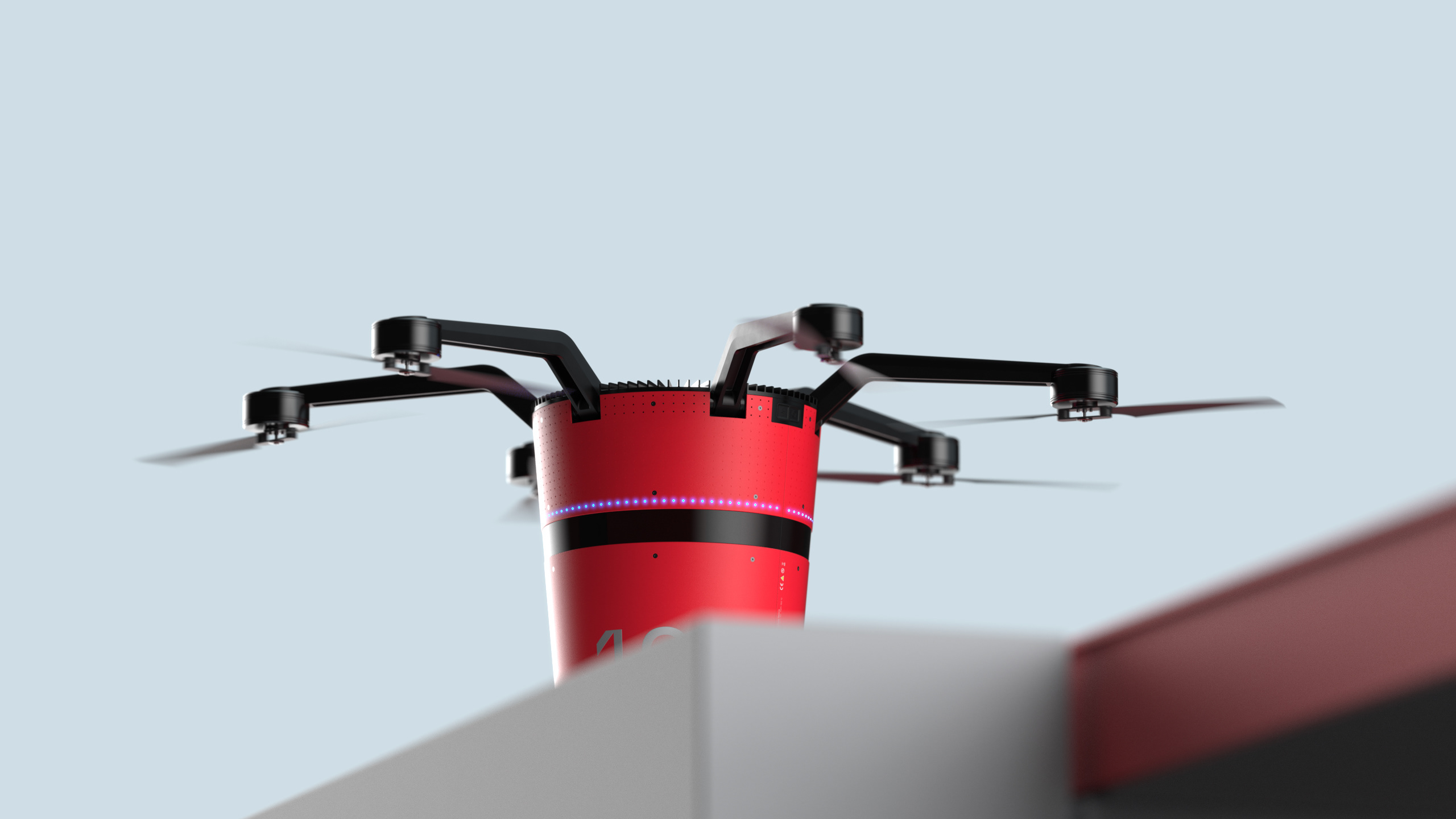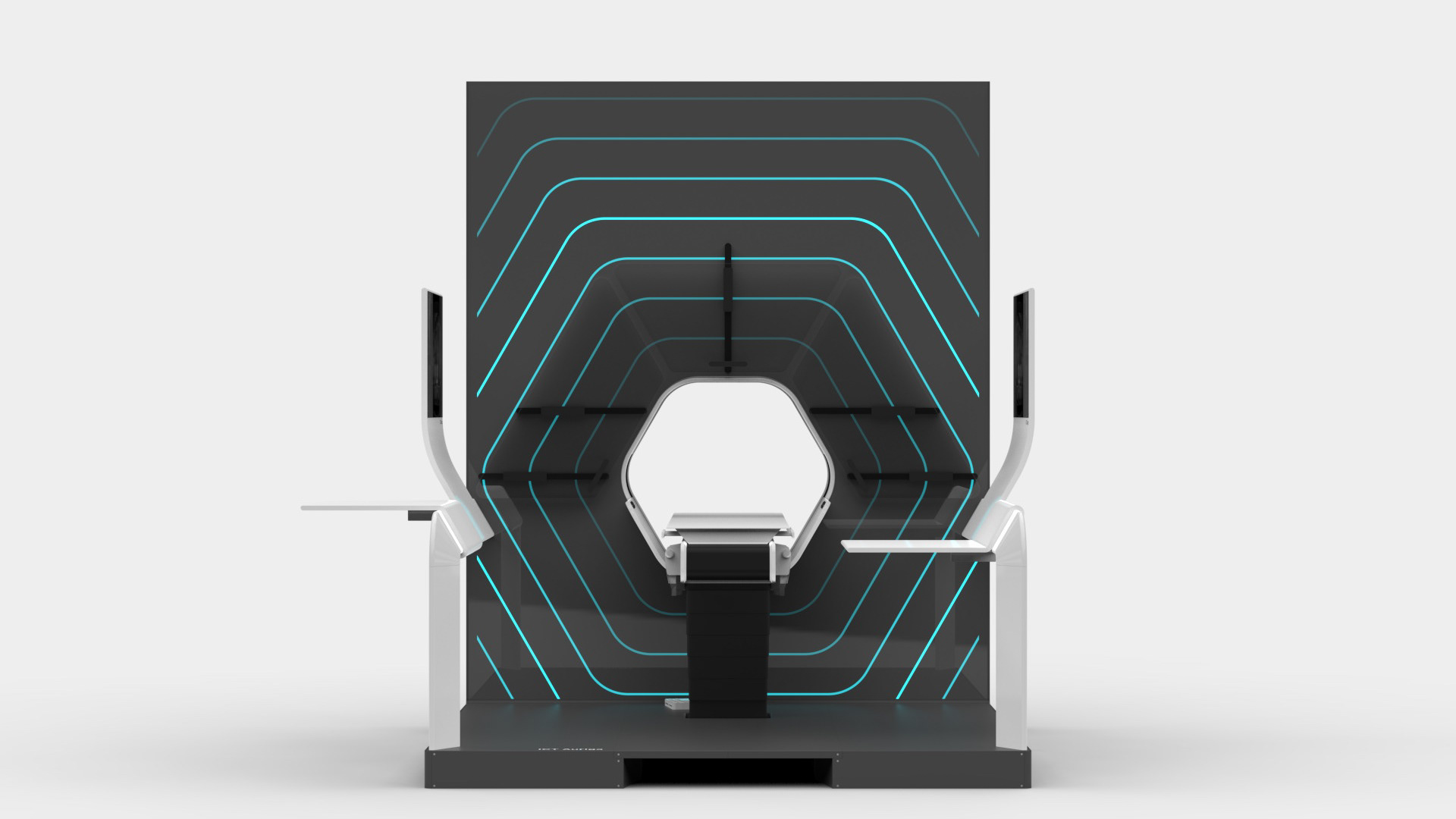OCRA is an innovative bicycle concept that makes use of the advantages of hub gears and allows for a highly compact design.
Instead of a chain to the rear wheel, the drive is directly at the front wheel and thus resembles a penny-farthing. However, while a penny-farthing requires a very large front wheel to get up to speed, the OCRA bike uses a hub gear to provide the necessary transmission.
The drive method allows the front and rear wheels to be closer together, which provides its compact design of 110 cm by 110 cm. However, the front wheel can no longer rotate which is why the rear wheel steers. A linkage rod transmits the rotation of the handlebar to the rear wheel. This mechanism not only allows the steering ratio to be adjusted, but also the handlebar to be unhooked and positioned transversely. Together with the retractable pedals, this results in a flat package that allows easy transport in cars and public transport.
The saddle is suspended by up to 80 mm by a tension damper. The suspension mechanism ensures that the saddle angle remains constant, even when the suspension is heavily compressed. The adjustment controls remain accessible through the window.
Integrated in the frame are a water bottle, a laptop/tablet compartment and a pocket for small items, e.g. tools or a lock.
#bike frame
#suspension
#invention
#fusion360
#keyshot3d
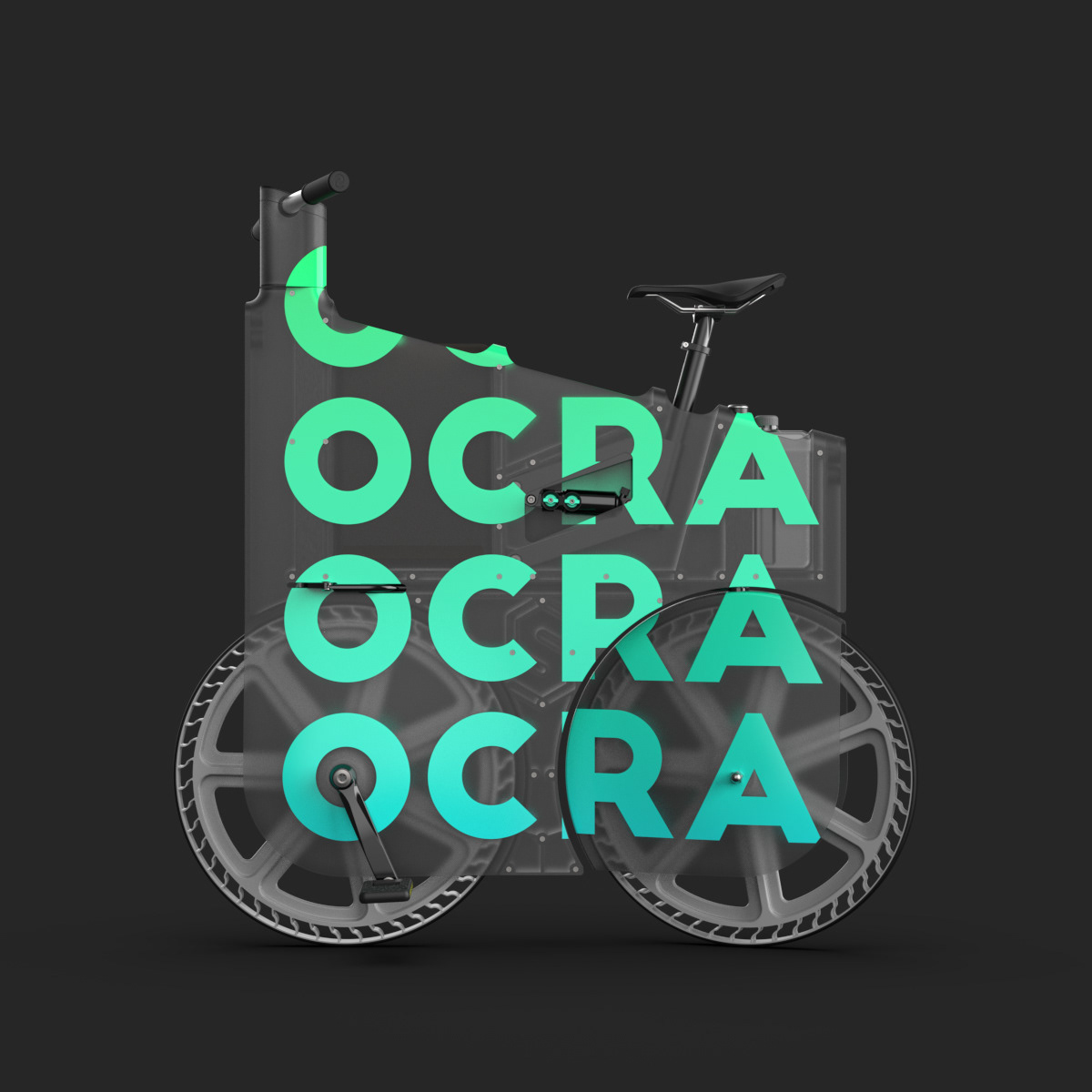


IDEA
The idea for this compact bike came from a picture of a self-built bike where the saddle and pedals were connected to the front wheel and the steering fork was connected crosswise to the rear wheel. I liked the idea of saving space between the front and rear wheels by using a direct front-wheel drive. This modified bike design presented me with several mechanical challenges which I tackled in this project.
CONCEPT
To make this concept work, I had to solve the following challenges: In order to achieve a reasonable speed, the pedalling energy has to be transferred to the bike via a hub gear. The hub gear has to provide direct mounting points for the pedals. Such hub gears are already available on geared unicycles, such as the Schlumpf Geared Unicycle Hub.
Another challenge is the redirection of the steering to the rear wheel, since the drive is on the front wheel. A direct steering rod to the rear wheel would invert the steering and make the steering angle too flat. Instead, I used a horizontal steering rod that transfers and inverts the steering movement to the rear wheel.
The project was originally the development of a bicycle frame with tension spring damping. Since the frame design is already very complex, I decided to use a saddle suspension.The saddle is connected to the frame via a movable parallelogram, which keeps the saddle angle constant. The damper is located in the parallelogram and damps the horizontal movement of the saddle.
Since the bike is a very compact and innovative construction, I decided to use a flat design instead of a classic frame design. The inner frame connects the wheels, the handlebar and the saddle and is covered by an acrylic panel. Openings at the top and side create the compartments and allow the adjustment wheels of the shock to be reached.
COLOUR VARIATIONS
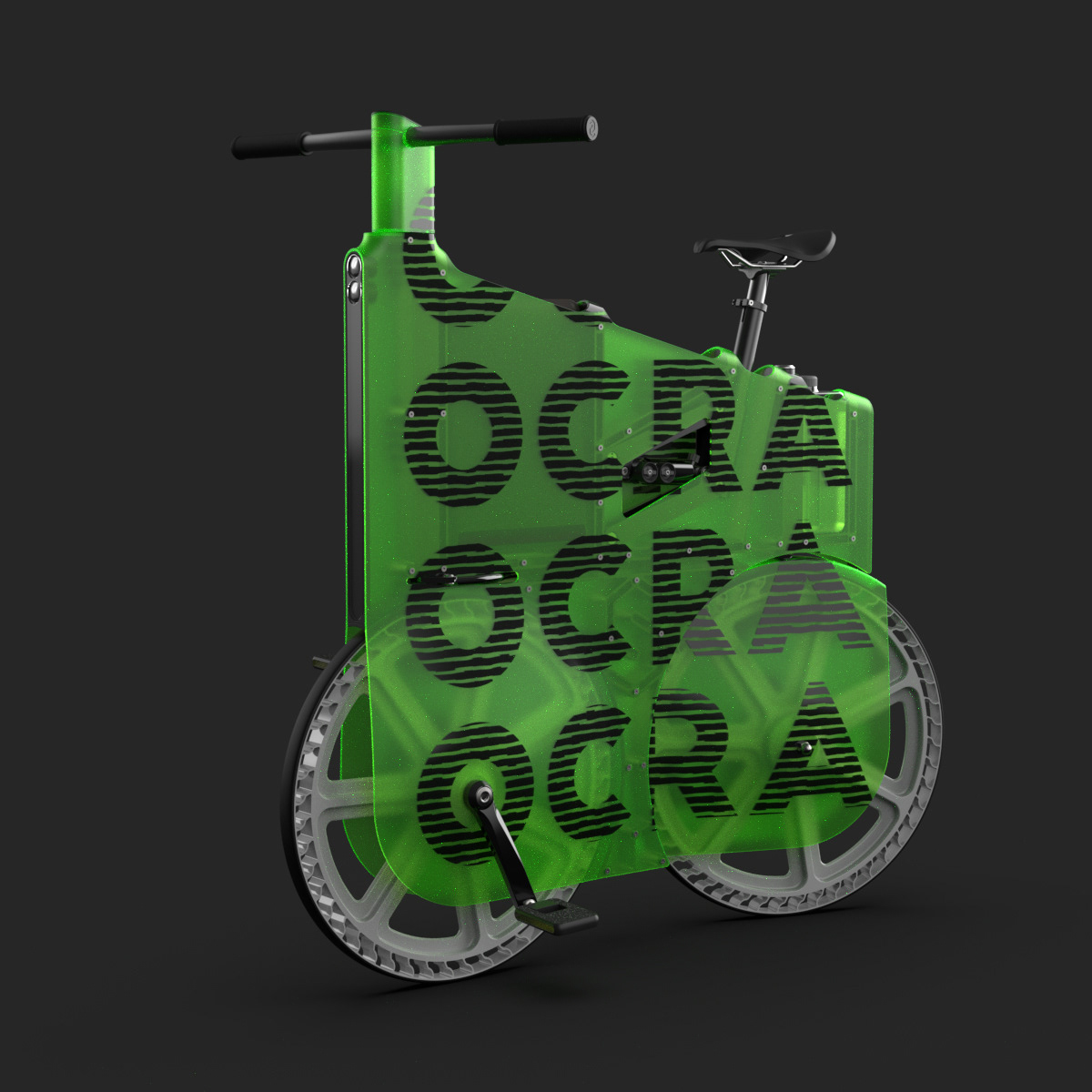
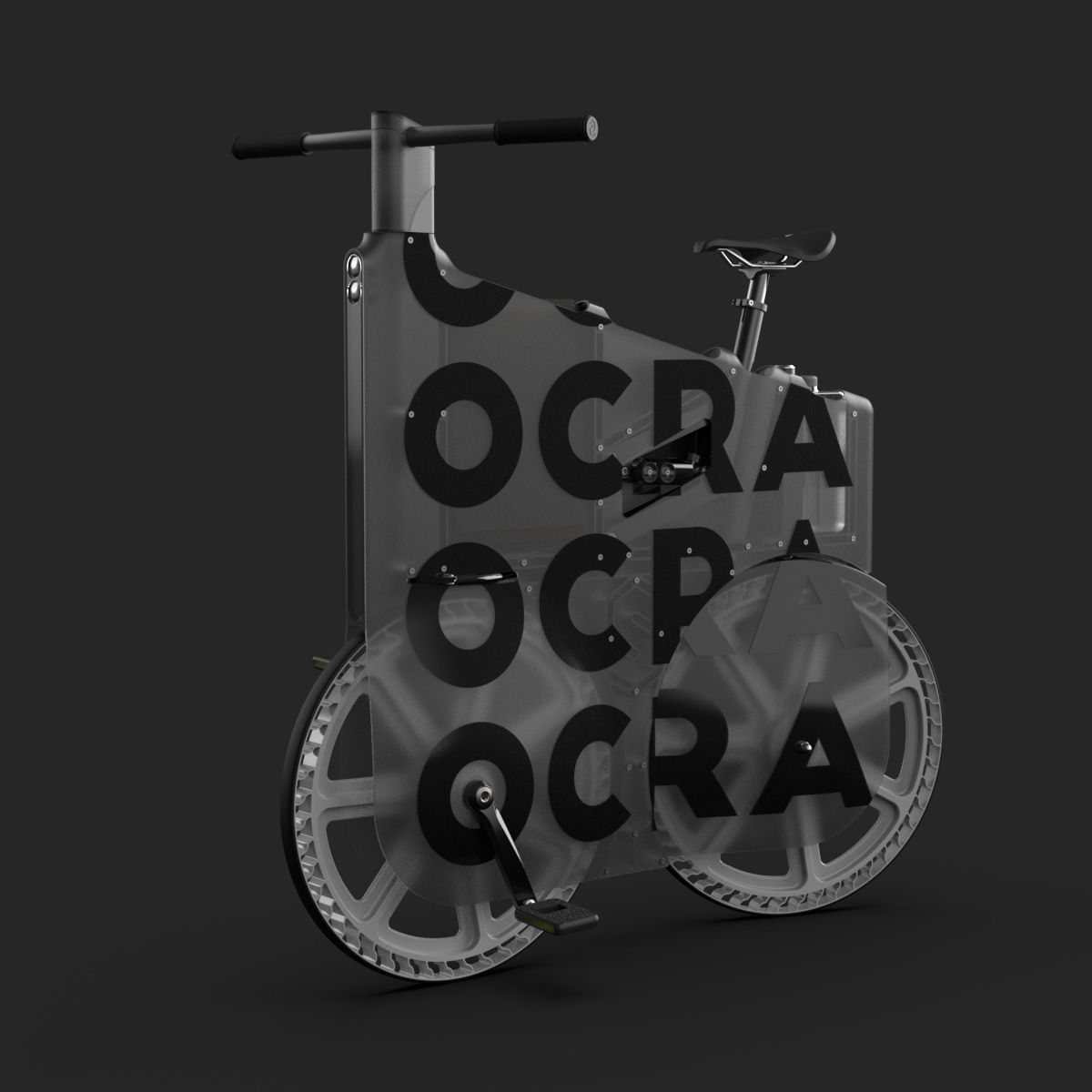
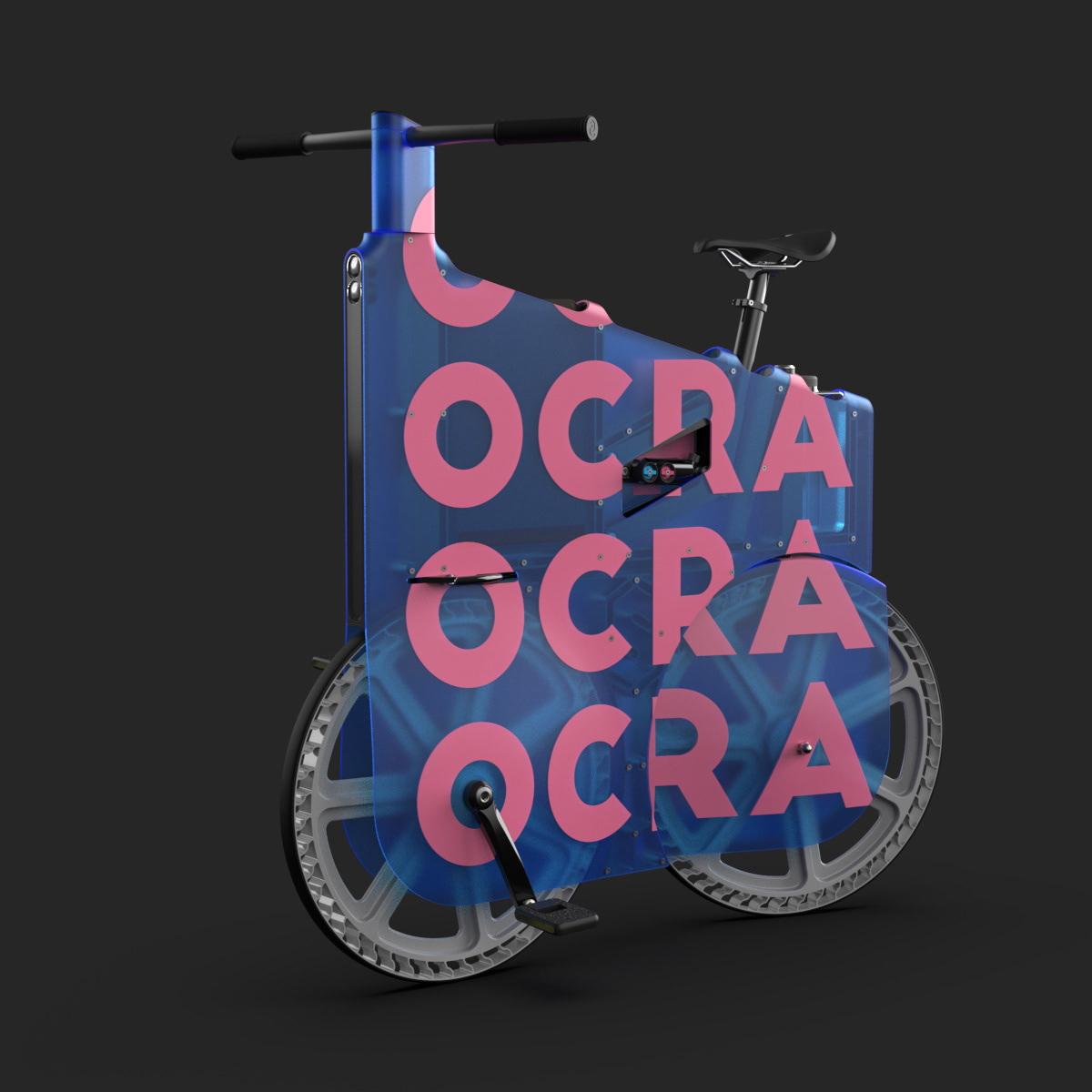
DESIGN
